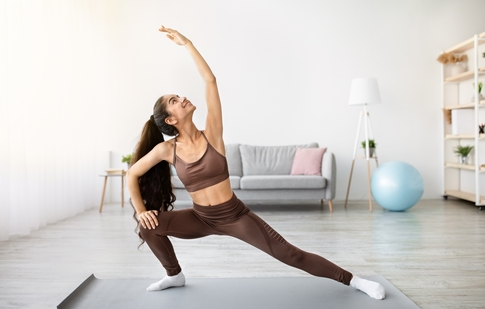Sweat smarter, not longer: Micro work outs decoded
These easy to do work out can be done anywhere since they don’t need equipment or much space, and they help you build consistent exercise habits.
Let’s be real — starting the year with “I’m gonna work out every day!” energy felt iconic, but just two weeks in, it’s giving meh vibes. And hey, you’re not alone — The Lancet Global Health spilled the tea that almost 50% of adults in India don’t get enough physical activity. But what if we told you working out for five minutes could actually do the job?

Sounds sus? Even American media personality and businesswoman Kim K’s trainer is a fan! Senada Greca, on Jay Shetty’s podcast On Purpose, hyped up five-minute workouts, saying, “(They) target some of the biggest muscles in your body.” Basically, it’s a power move.
Plus, receipts alert! A study from the British Journal of Sports Medicine found that short bursts of intense exercise can seriously cut your risk of heart issues. Enter micro workouts, the glow-up fitness trend you didn’t know you needed.
What is a micro workout?
“Micro workouts are condensed, high-intensity exercises lasting just two to 10 minutes with short bursts of movement done several times a day, adding up to a longer workout,” says fitness expert and author Vesna P Jacob. Fitness expert Pranav Mehra adds, “They’re designed to fit seamlessly into your day at home or office, making fitness accessible even for the busiest individuals.”
The concept is simple — quality over quantity. These quick sessions focus on movements like squats, push-ups, or planks, delivering effective results without the need for elaborate gym equipment. Sessions shouldn’t exceed 10 minutes to maintain intensity.
Why micro workouts?
“The biggest advantage of micro-workouts is that they help you fit movement into your day, with just three to seven minutes to spare,” says fitness expert Piyush Chauhan, adding, “You can cover the three main fitness areas such as cardio, strength, and flexibility in a short session for a quick and balanced workout.”
Micro-workouts are easy to do anywhere since they don’t need equipment or much space, and they help you build consistent exercise habits.
“Whether it’s a five-minute bodyweight circuit during office break or a brisk walk up a hill, doing it three times a week can the strength and stamina can be up to 20%,” explains Jacob.
Out with traditional workouts?
The primary difference between micro workouts and traditional ones is time. While a traditional routine often demands 45 minutes to an hour of structured exercise, micro workouts condense effort into just a few minutes of high-intensity activity.
Traditional workouts focus on progressive overload and longer durations for building muscle and endurance, whereas micro workouts are more about convenience and consistency, making them ideal for those who lack the time or motivation for extended gym sessions.
Maximise micro workouts
Turn everyday tasks into mini workouts — take the stairs, do calf raises while brushing your teeth, squat while watching TV.
Aim to build a routine that works for your schedule. Even five minutes a day adds up over time.
Use apps or timers that can guide you through short, effective sessions like Tabata or HIIT circuits.
Combine these short bursts with stretches or yoga to enhance flexibility and reduce stress.
10 mins to (micro) workout to try:
Wall push-ups (1 min)
Stand facing a wall, place your hands at shoulder height, and push in and out.
Builds arm and chest strength.
Chair squats (1 min)
Sit on a chair and then stand up. Repeat.
Engages legs and glutes.
Glute bridges (1 min)
Lie on your back, bend your knees inwards, lift your hips. Strengthens lower back and glutes.
Standing calf raises (1 min)
Stand on your toes, pause, then lower down on your heels slowly.
Builds leg strength and improves balance.






